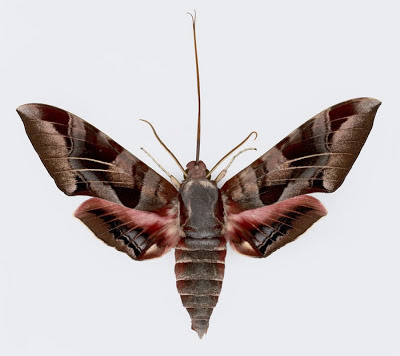Of course this is not my picture but can be found at
http://www.fs.fed.us/wildflowers/pollinators/pollinator-of-the-month/images/hawkmoths/eumorpha_typhon_lg.jpg This is the sphinx moth, hawk moth or sometimes we call them the hummingbird moth because they can pause in mid-air in front of a flower and sip up its nectar. However, my moth was gone as soon as I tried to get my camera. But the feds site will let me use their picture. You will see them flying now, usually around dusk although they feed on the nectar of flowers and serve as very good pollinators, particularly of flowers with very long "throats". This is because their "tongue" is so long. But....there is a problem for gardeners.
This is the hornworm and it is the larva or immature (baby) of the sphinx/hawk/hummingbird moth. You will see them devouring grape leaves (one of their favorites), tomato leaves and other garden crops. They can be devastating this time of year and you might see them again in the fall.
It is your call but if you want to control these "caterpillars" or larvae then use Bt (Dipel or Thuricide) or Spinosad for organic control. It will not harm the adult moth but will help in controlling the eating by the larvae. This will of course prevent the larvae that you kill from becoming more moths.


This is an excellent information and picture I have seen and I like way that you can share it
ReplyDeleteAssignment help
Wow, I love all the photos you folks have posted.
ReplyDeleteThank you for this excellent Information!! I definitely like every little bit of it. I have saved your site to check out the new thing you post.
Assignment help
We are really grateful for your blog post. You will find a lot of approaches after visiting your post. Great work
ReplyDeleteAssignment Help USA